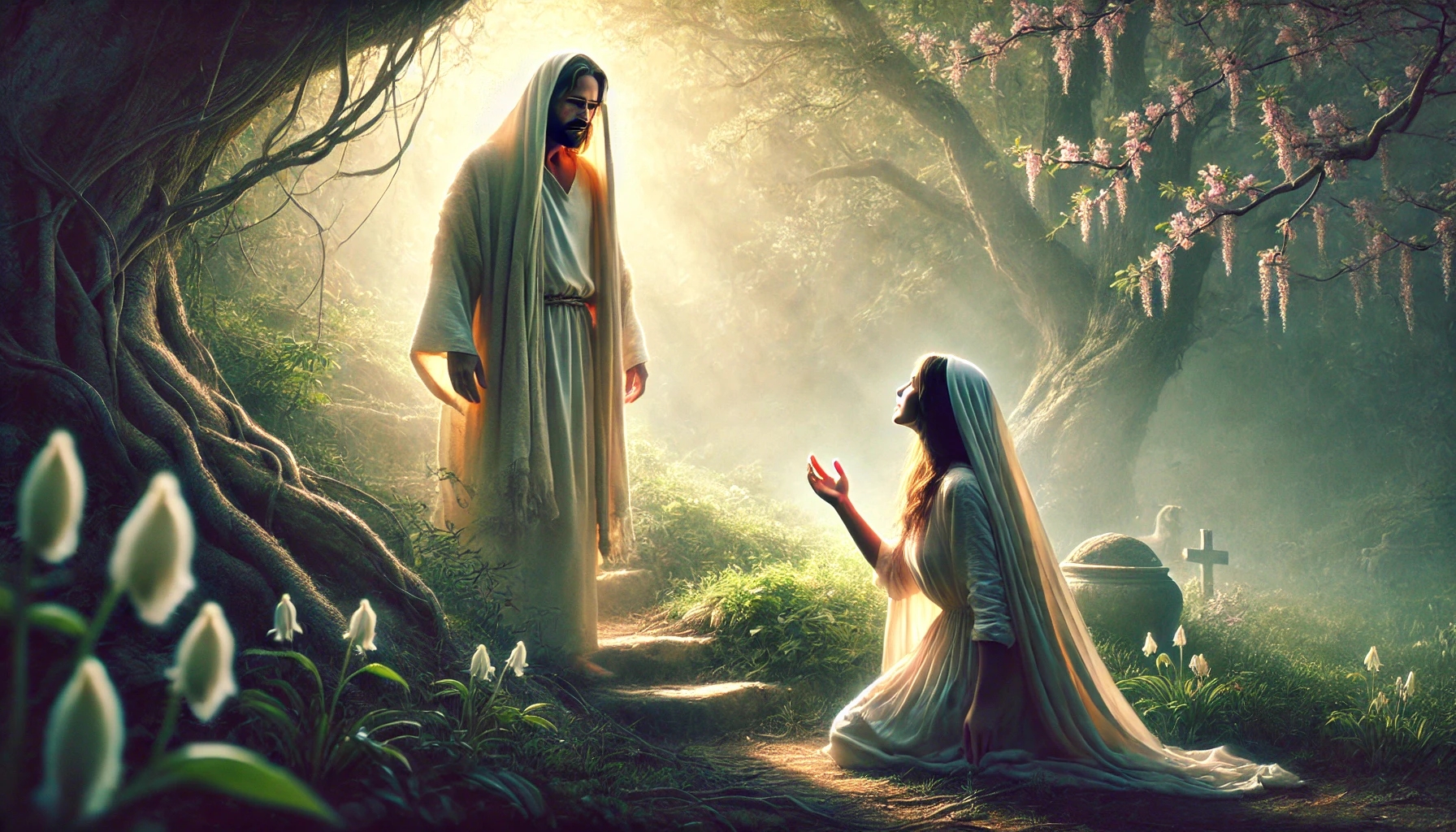
August 27, 2024
DAILY BIBLE READING – Matthew Chapter 28
1 In the end of the sabbath, as it began to dawn toward the first day of the week, came Mary Magdalene and the other Mary to see the sepulchre.
2 And, behold, there was a great earthquake: for the angel of the Lord descended from heaven, and came and rolled back the stone from the door, and sat upon it.
3 His countenance was like lightning, and his raiment white as snow:
4 And for fear of him the keepers did shake, and became as dead men.
5 And the angel answered and said unto the women, Fear not ye: for I know that ye seek Jesus, which was crucified.
6 He is not here: for he is risen, as he said. Come, see the place where the Lord lay.
7 And go quickly, and tell his disciples that he is risen from the dead; and, behold, he goeth before you into Galilee; there shall ye see him: lo, I have told you.
8 And they departed quickly from the sepulchre with fear and great joy; and did run to bring his disciples word.
9 And as they went to tell his disciples, behold, Jesus met them, saying, All hail. And they came and held him by the feet, and worshipped him.
10 Then said Jesus unto them, Be not afraid: go tell my brethren that they go into Galilee, and there shall they see me.
11 Now when they were going, behold, some of the watch came into the city, and shewed unto the chief priests all the things that were done.
12 And when they were assembled with the elders, and had taken counsel, they gave large money unto the soldiers,
13 Saying, Say ye, His disciples came by night, and stole him away while we slept.
14 And if this come to the governor’s ears, we will persuade him, and secure you.
15 So they took the money, and did as they were taught: and this saying is commonly reported among the Jews until this day.
16 Then the eleven disciples went away into Galilee, into a mountain where Jesus had appointed them.
17 And when they saw him, they worshipped him: but some doubted.
18 And Jesus came and spake unto them, saying, All power is given unto me in heaven and in earth.
19 Go ye therefore, and teach all nations, baptizing them in the name of the Father, and of the Son, and of the Holy Ghost:
20 Teaching them to observe all things whatsoever I have commanded you: and, lo, I am with you always, even unto the end of the world. Amen.
King James Version. Public Domain
Commentary
Introduction:
Matthew 28 represents the climax of the Christian message and the conclusion of the Passion of Jesus. It recounts the resurrection of Jesus Christ, an event that constitutes the central belief of Christianity. The chapter begins with the women discovering the empty tomb and ends with the Great Commission, which gives the disciples and all future believers the task of spreading Jesus’ teachings to the world.
Commentary:
Matthew 28 begins with the account of Jesus’ resurrection, a pivotal turning point in the history of Christianity. Mary Magdalene and the other Mary come to the tomb to anoint Jesus’ body, only to find that the tomb is empty. The scene is dramatically underscored by an earthquake and the appearance of an angel who rolls away the stone from the tomb. The angel announces Jesus’ resurrection to the women, a message that brings both fear and great joy. These women are the first witnesses of the resurrection and the first to spread this joyous news.
The appearance of Jesus himself to the women on their way to the disciples further emphasizes the significance of the resurrection. Jesus greets them with the words “Do not be afraid,” showing that the resurrection is not only a miracle but also a sign of peace and hope. Jesus’ instructions to the women to tell the disciples to go to Galilee prepare the way for the Great Commission that follows at the end of the chapter.
In parallel to the joyful message of the resurrection, the chapter also presents the reaction of the Jewish leaders, who attempt to portray the resurrection as a deceit. This reaction contrasts the truth of the Gospel with human efforts to suppress it. The soldiers guarding the tomb are bribed to lie and claim that the disciples stole Jesus’ body. However, this attempt to cover up the resurrection is ultimately depicted as fruitless, as the message of Jesus’ resurrection continues to spread.
The climax of the chapter and the entire Gospel is Jesus’ Great Commission to his disciples. On a mountain in Galilee, the site of many significant events in Jesus’ life, He gives the disciples the mandate to teach and baptize all nations. This command emphasizes the universal nature of the Gospel and the disciples’ responsibility to carry Jesus’ message to the entire world. Jesus assures them that “all authority in heaven and on earth” has been given to Him and concludes with the promise that He will be with them “to the very end of the age.” This promise provides believers with comfort and confidence that Jesus remains present in their lives as they spread His teachings.
Summary:
Matthew 28 describes the resurrection of Jesus and its far-reaching significance for the Christian community. The discovery of the empty tomb and the encounter with the risen Jesus strengthen the disciples in their faith and prepare them for their future mission. The Great Commission, which is to carry the Gospel to the world, highlights the global and timeless dimension of Jesus’ message. The chapter concludes with the promise of Jesus’ constant presence, which provides believers with strength and assurance for their mission.
![]()

WEEKLY SPIRIT OF PROPHECY READING – Ellen White | The Desire of Ages Chapter 58—“Lazarus, Come Forth”
This chapter is based on Luke 10:38-42; John 11:1-44.
Read online here
Commentary
The chapter “Lazarus, Come Fourth” describes one of the most powerful and symbolic episodes in the ministry of Jesus. The raising of Lazarus from the dead is not only a remarkable miracle but also a profound testament to Jesus’ divine authority and love for his friends. This chapter uniquely brings together faith, hope, and the nature of divine providence.
Lazarus and the Family in Bethany:
Lazarus, along with his sisters Mary and Martha, are among Jesus’ most devoted followers. The close bond between them and Jesus goes far beyond what one would expect in a mere teacher-student relationship. The house in Bethany, home to Lazarus and his sisters, often serves as a refuge for Jesus, a place of peace and friendship where he can rest from the demands of his public ministry. This deep emotional connection becomes particularly evident when Lazarus falls ill and eventually dies.
Jesus’ Reaction to Lazarus’ Death:
Interestingly, Jesus hesitates to go to Bethany upon hearing of Lazarus’ illness. This delay initially seems puzzling, especially to the disciples who are aware of Jesus’ deep affection for Lazarus and his family. However, Jesus’ delay is intentional and serves a greater purpose: the glorification of God and the strengthening of his disciples’ faith. Jesus knows that the forthcoming miracle, the resurrection of Lazarus, will provide a powerful demonstration of his divine power and his identity as the Messiah.
The Dialogue with Martha and Mary:
When Jesus finally arrives in Bethany, he is greeted by Martha, who affirms her faith in him but is still sorrowful over her brother’s death. Jesus uses this moment to strengthen both Martha’s and Mary’s faith by telling them that he himself is “the resurrection and the life.” These words are central, as they not only point to the imminent resurrection of Lazarus but also to the deeper truth that Jesus embodies eternal life itself.
The Raising of Lazarus:
The climax of the chapter is undoubtedly the scene where Jesus calls Lazarus out of the tomb. This act is so powerful and majestic that it dispels any doubts about Jesus’ divine nature. The miracle is a symbolic act that foreshadows the future resurrection of all believers and demonstrates Jesus’ sovereignty over life and death. The reaction of those present—a mixture of astonishment, joy, and gratitude—highlights the profound emotional and spiritual impact of this miracle.
Significance for Faith:
The raising of Lazarus is not only a physical miracle but also a spiritual sign. It shows that faith in Jesus offers a living hope for eternal life, a hope that extends beyond death. Jesus demonstrates that death does not have the final word, but that through him, life triumphs. For the disciples and all who witness this event, it becomes clear that Jesus is indeed the Son of God, who has come to establish the Kingdom of God on earth.
The Deep Humanity of Jesus:
What is particularly moving is the portrayal of Jesus’ deep compassion. Although he knows that he will raise Lazarus from the dead, he weeps with those who mourn. These tears reveal Jesus’ full humanity and his capacity to experience genuine pain and loss. It presents a picture of Jesus that brings him closer to us: the divine Savior who is fully human, suffering with us and understanding our suffering.
Conclusion:
The chapter “Lazarus, Come Fourth” illustrates that Jesus’ actions and words are always directed toward a deeper, divine purpose—revealing his nature and mission to bring life that transcends death. The resurrection of Lazarus is a precursor to the final resurrection and a powerful symbol of the victory of life over death. It reminds us that in times of suffering and darkness, faith in Christ can lead us to a new life that surpasses our current reality.
(Visited 9 times, 1 visits today)




















